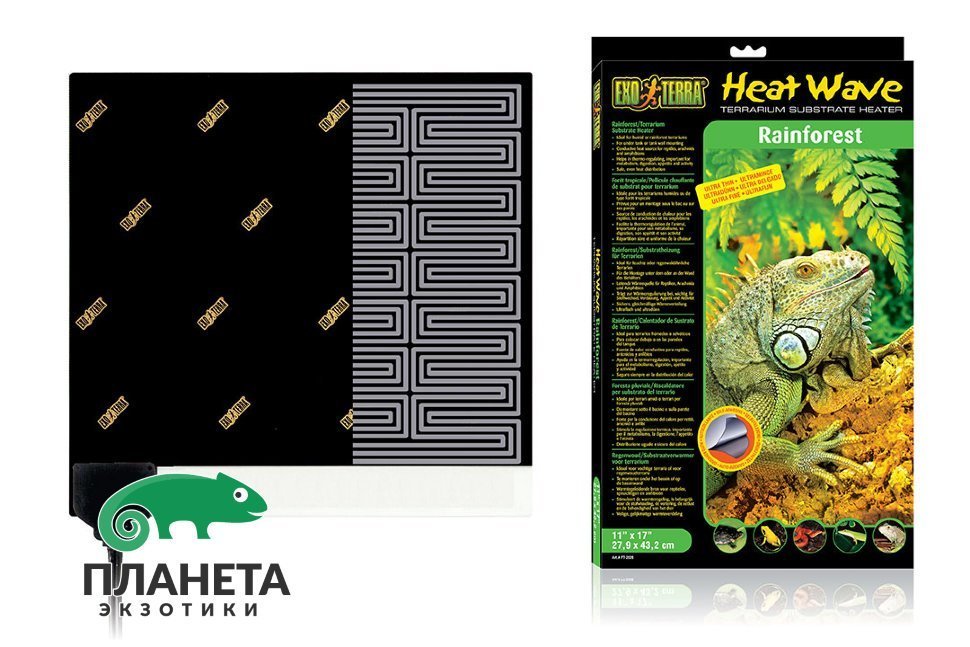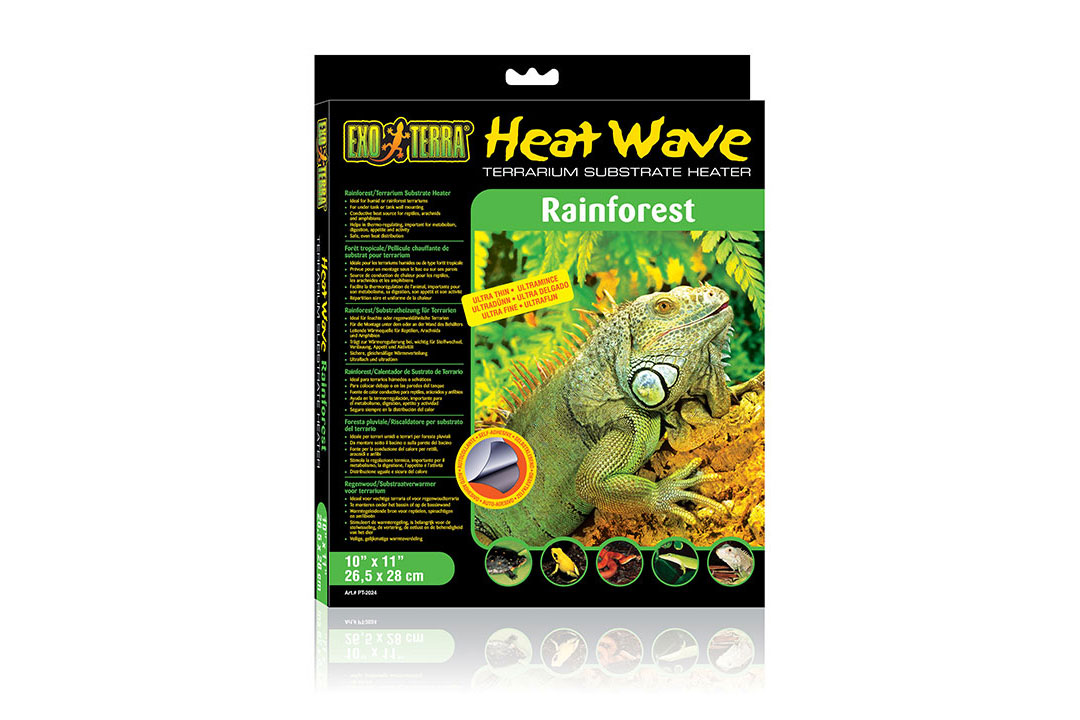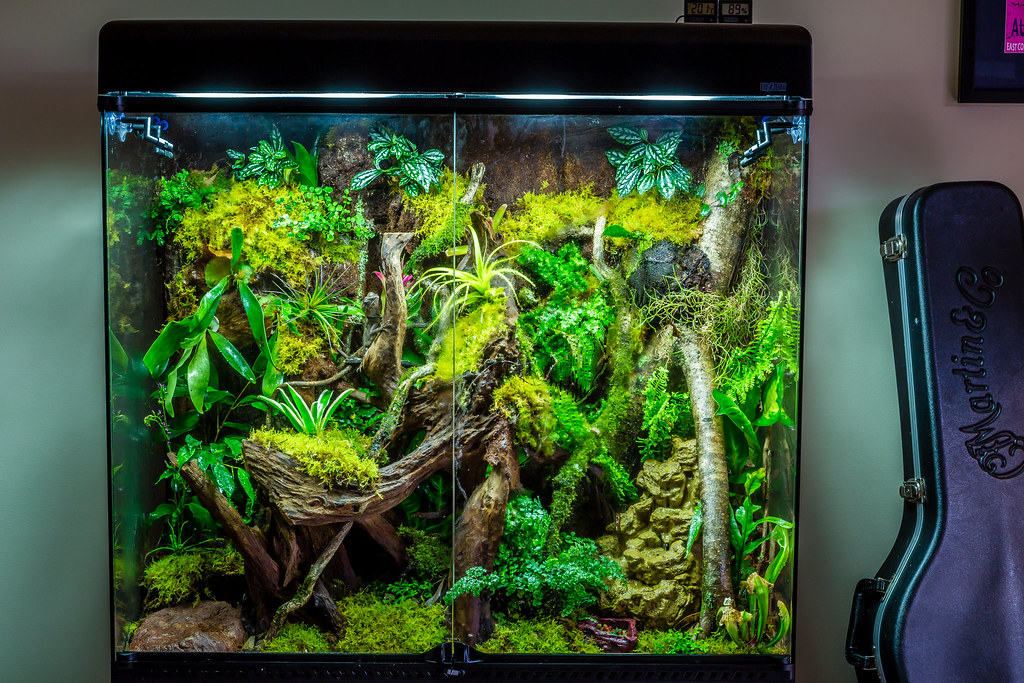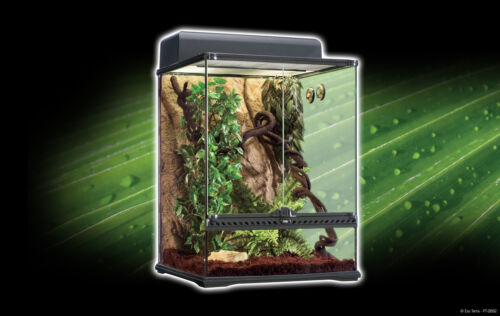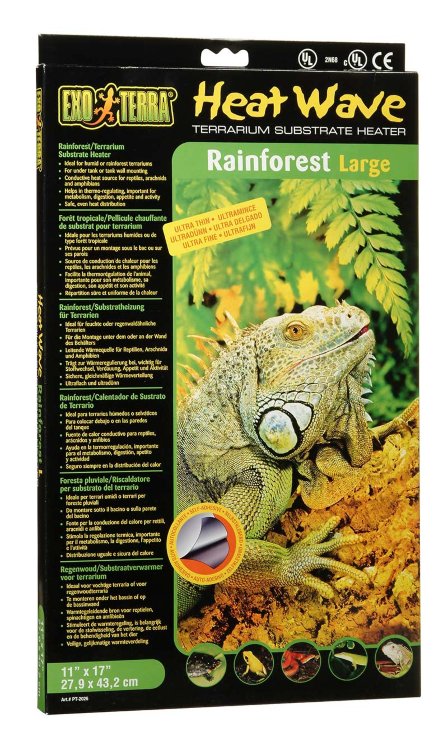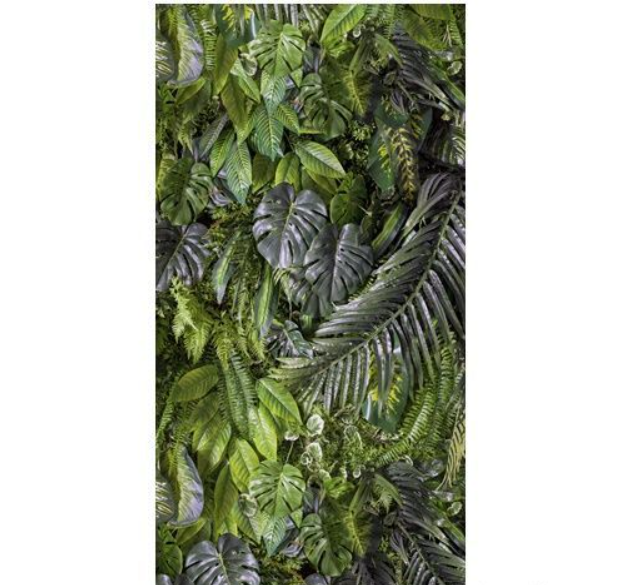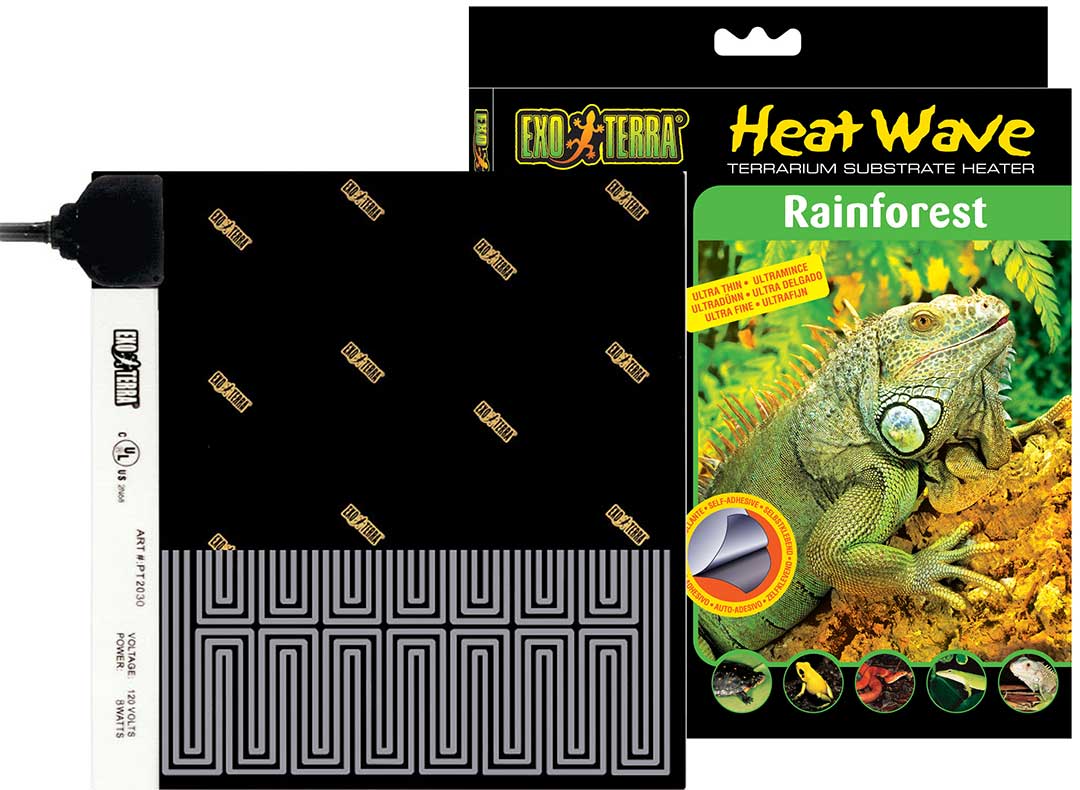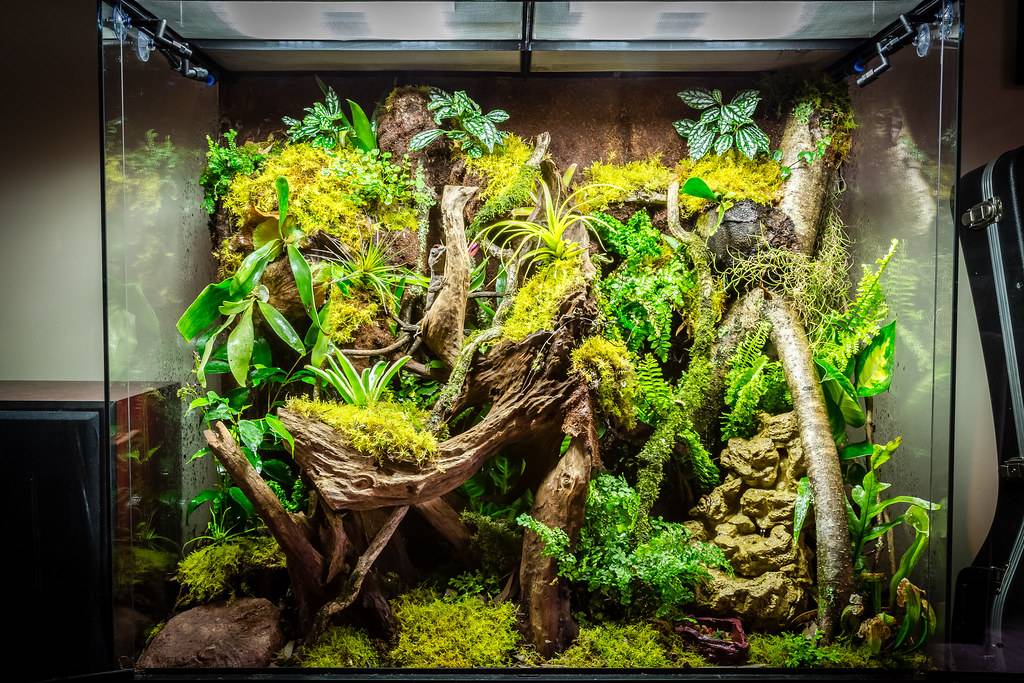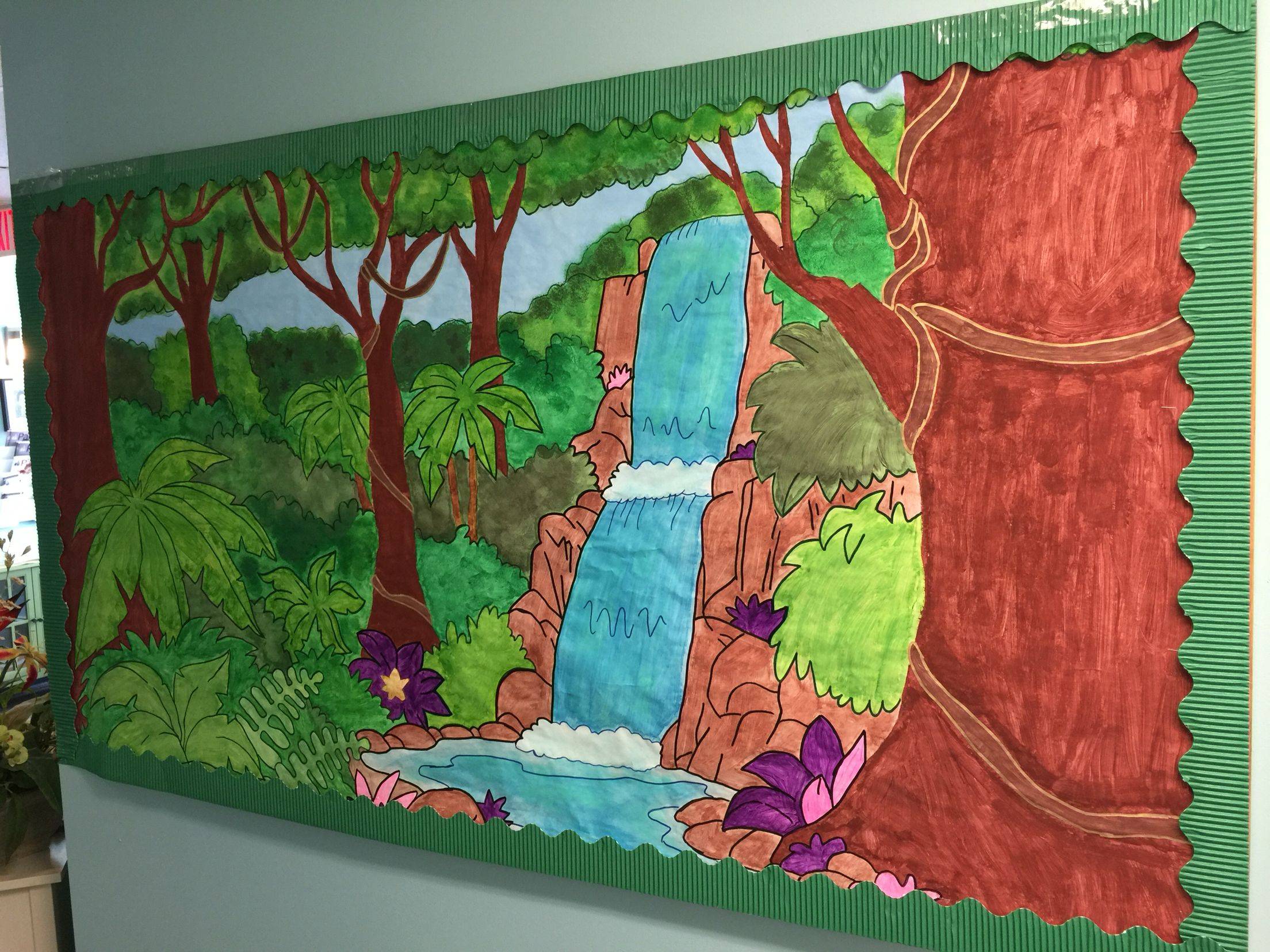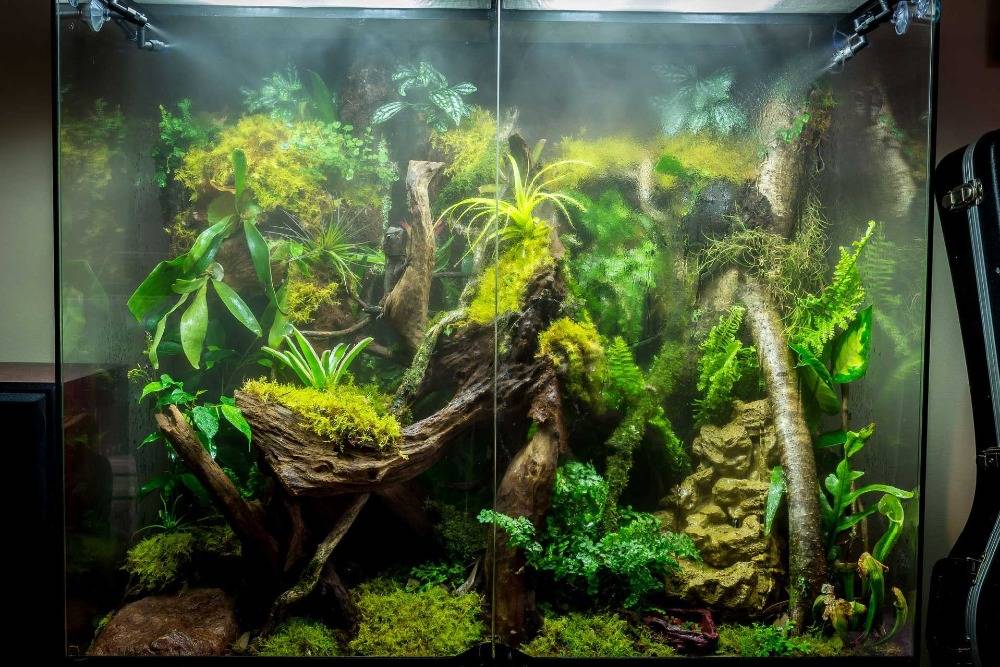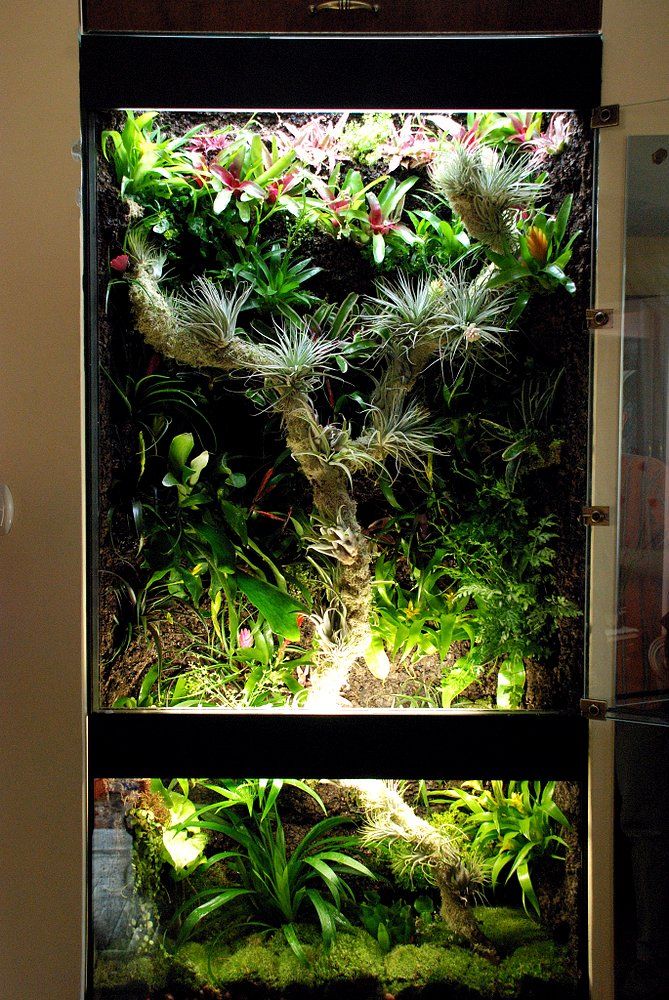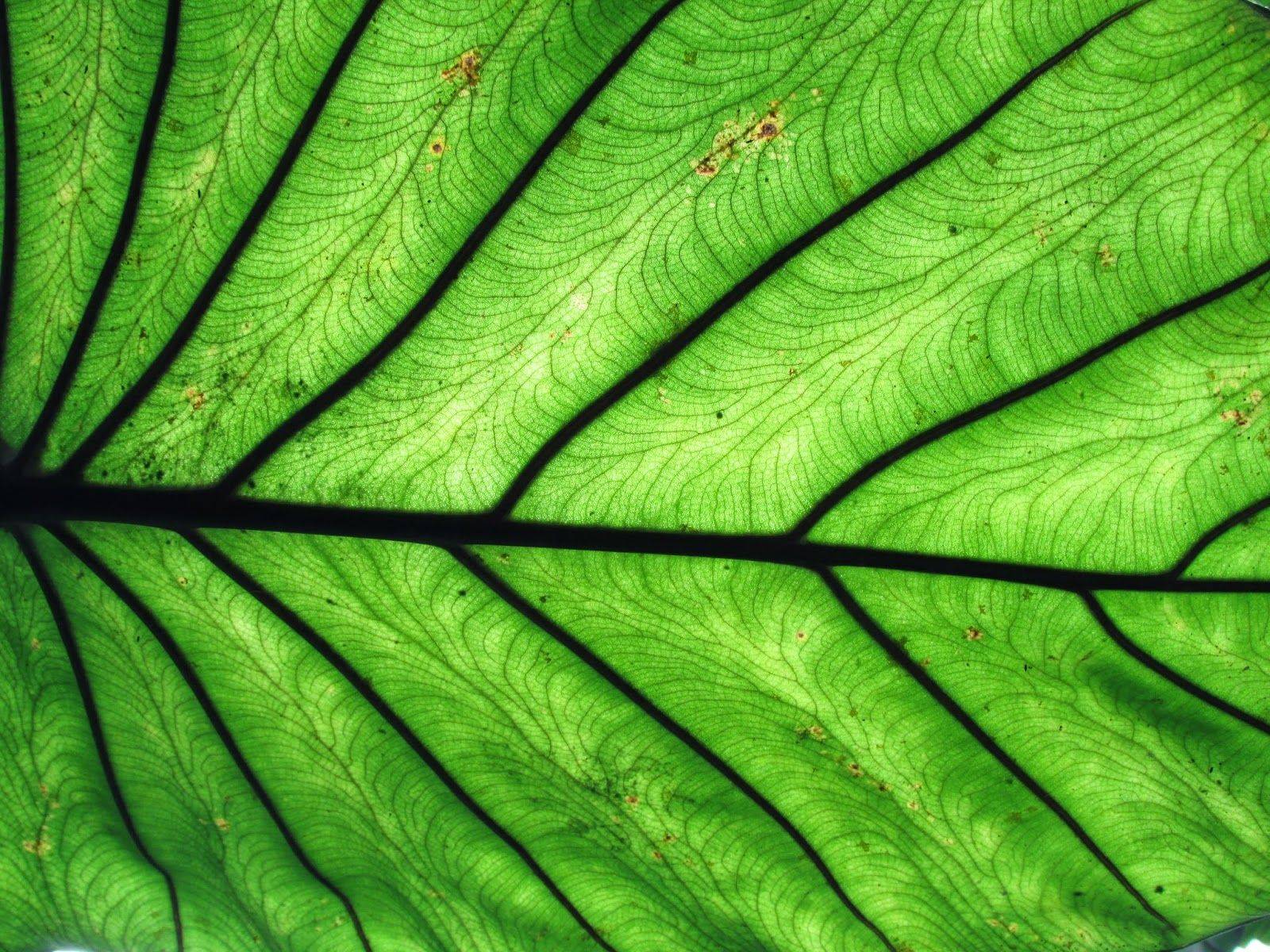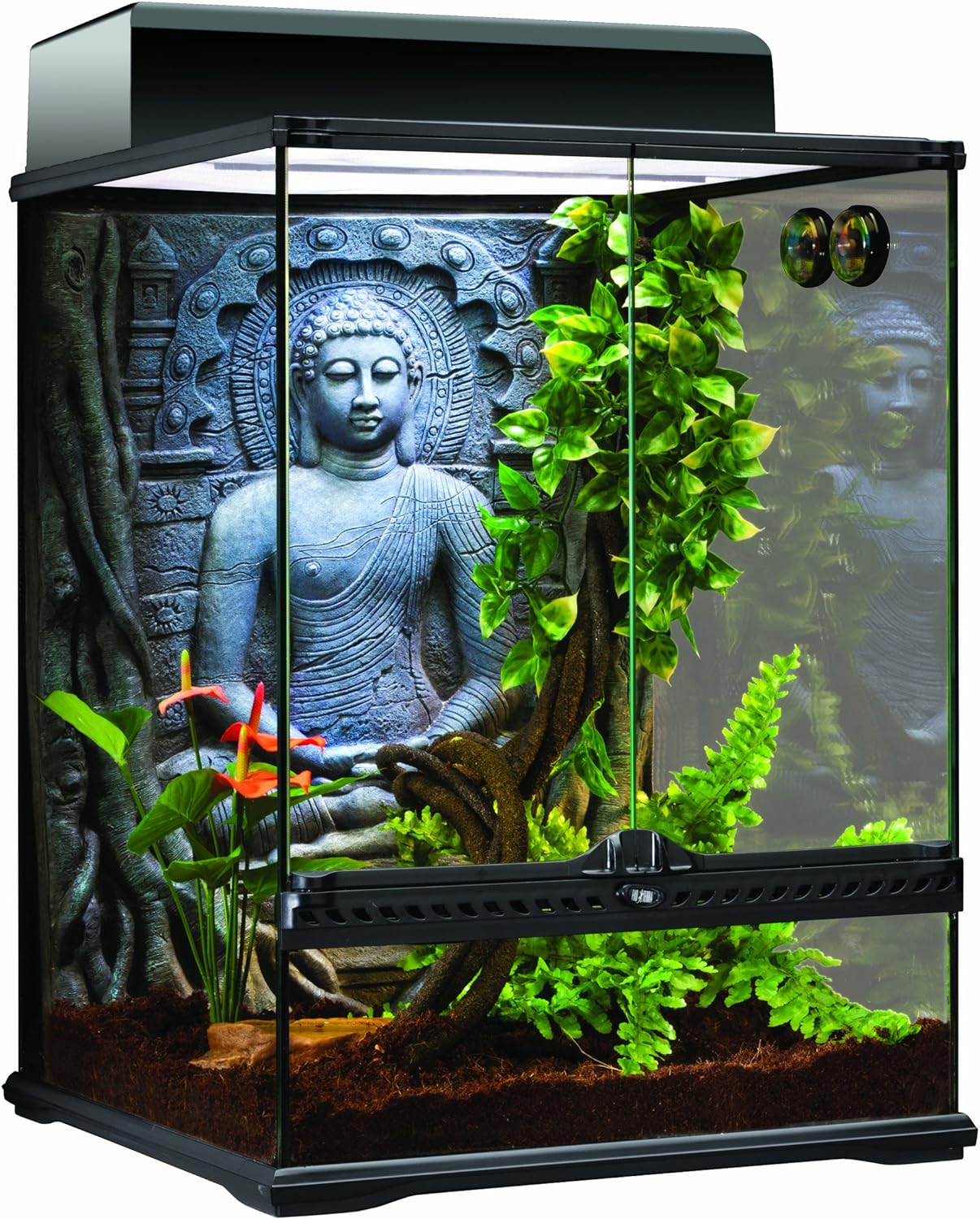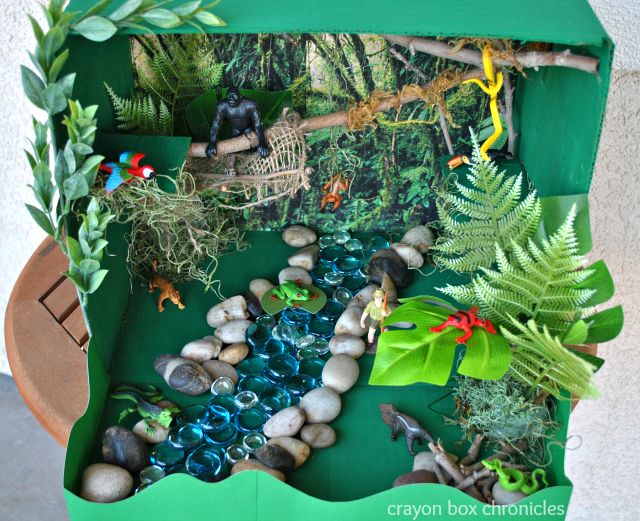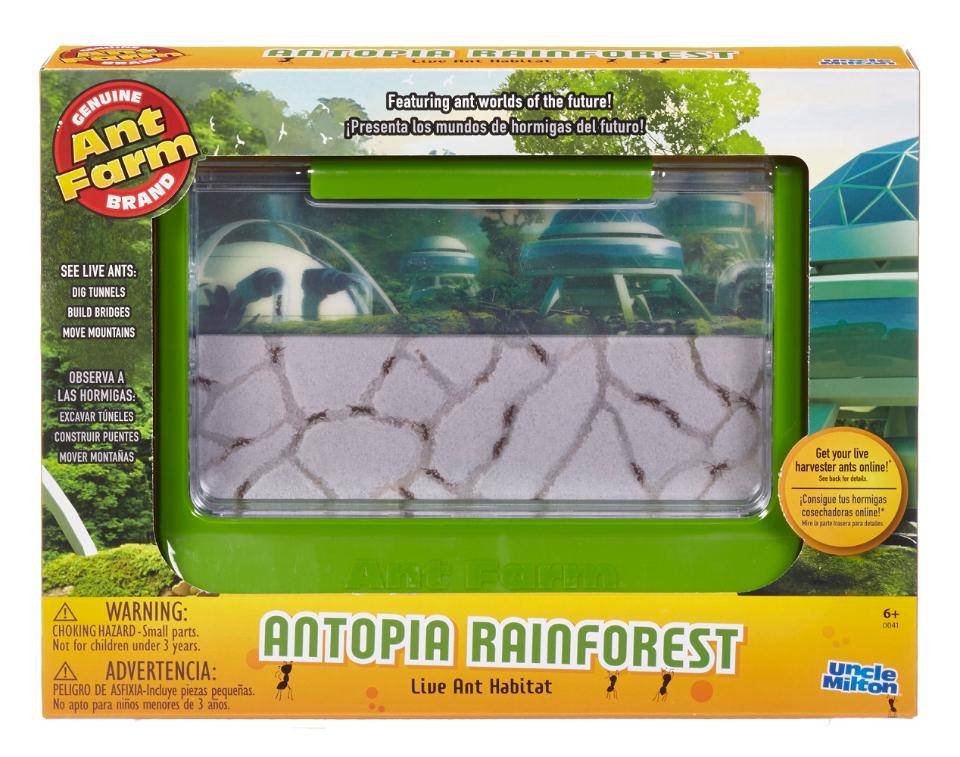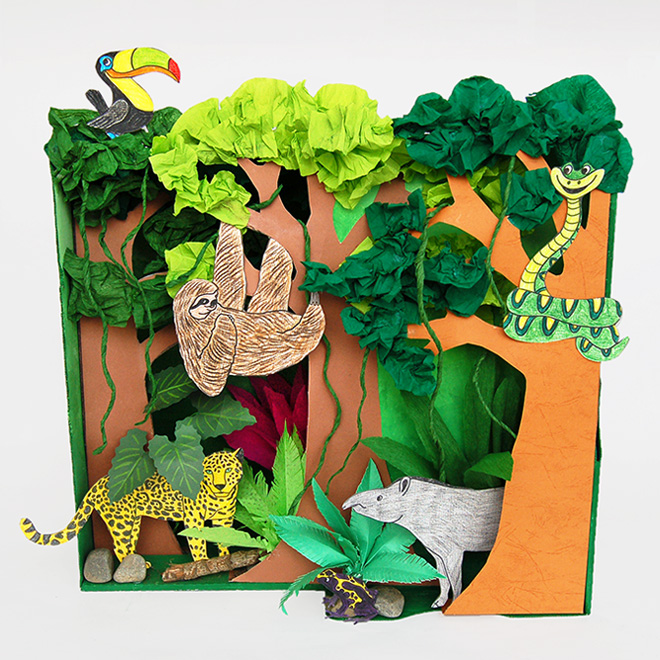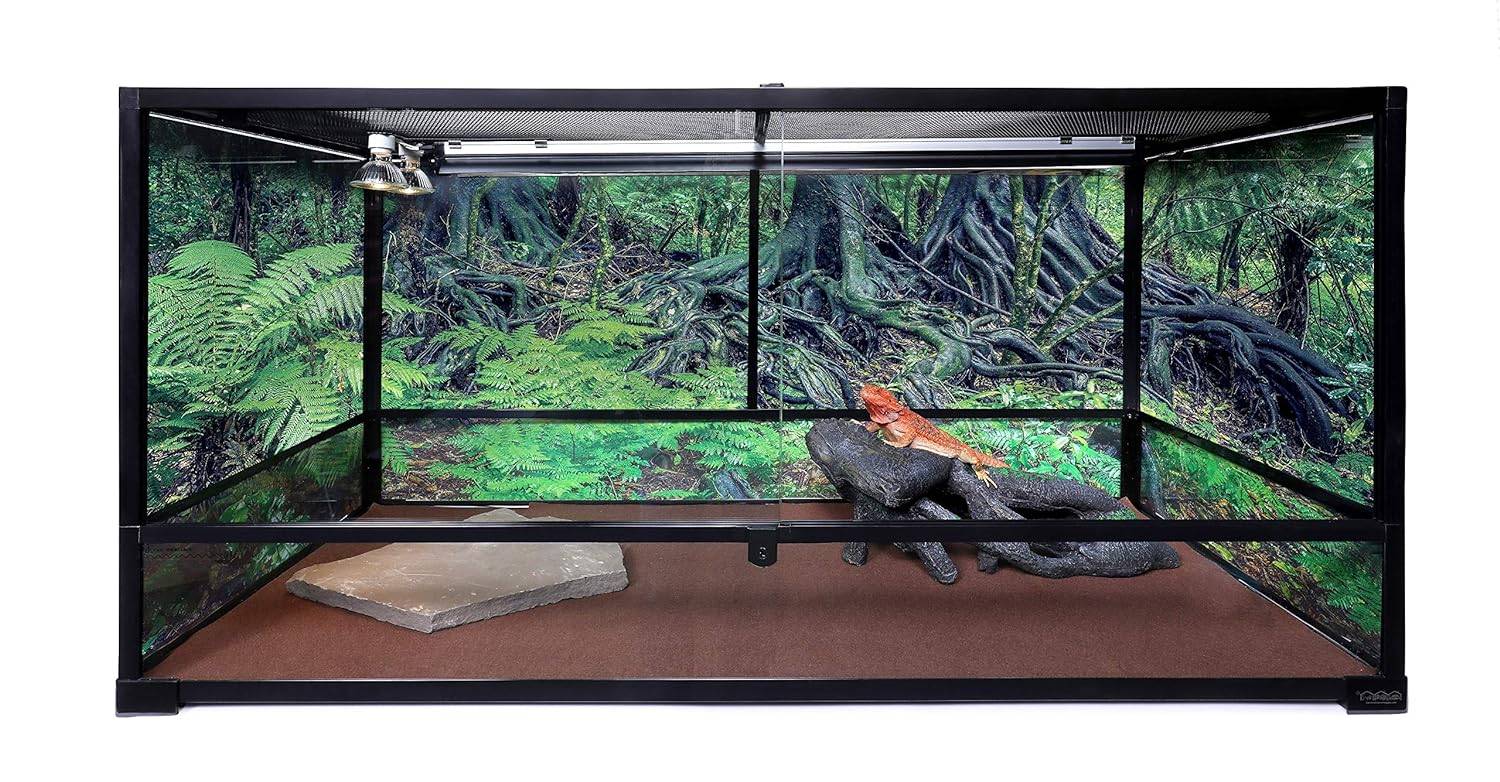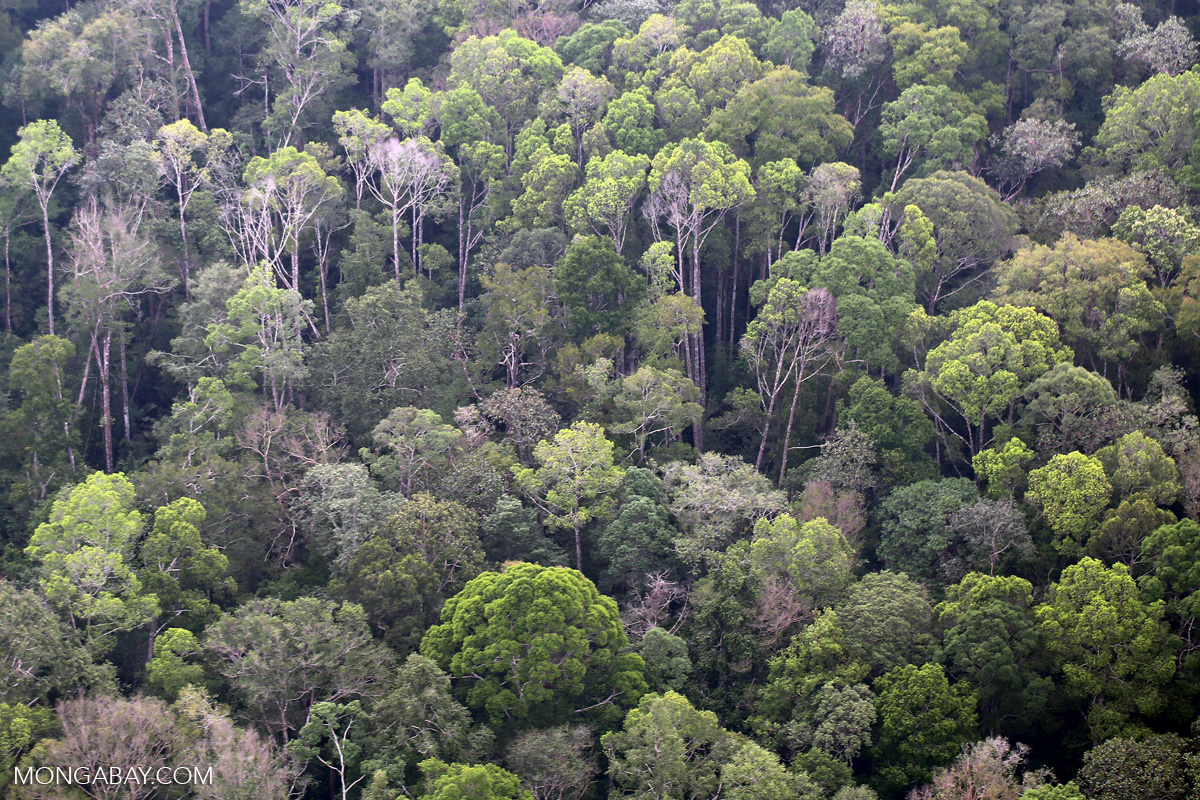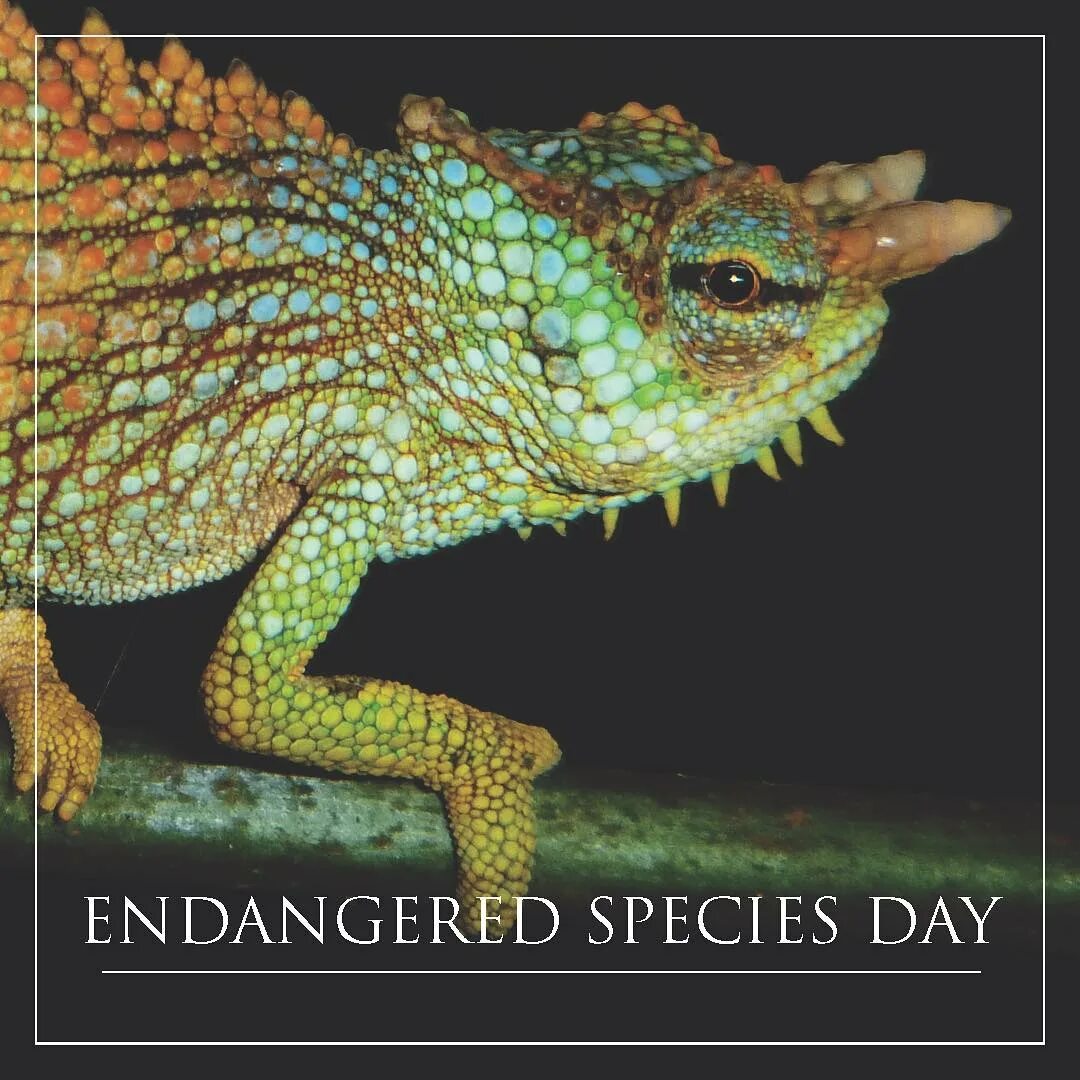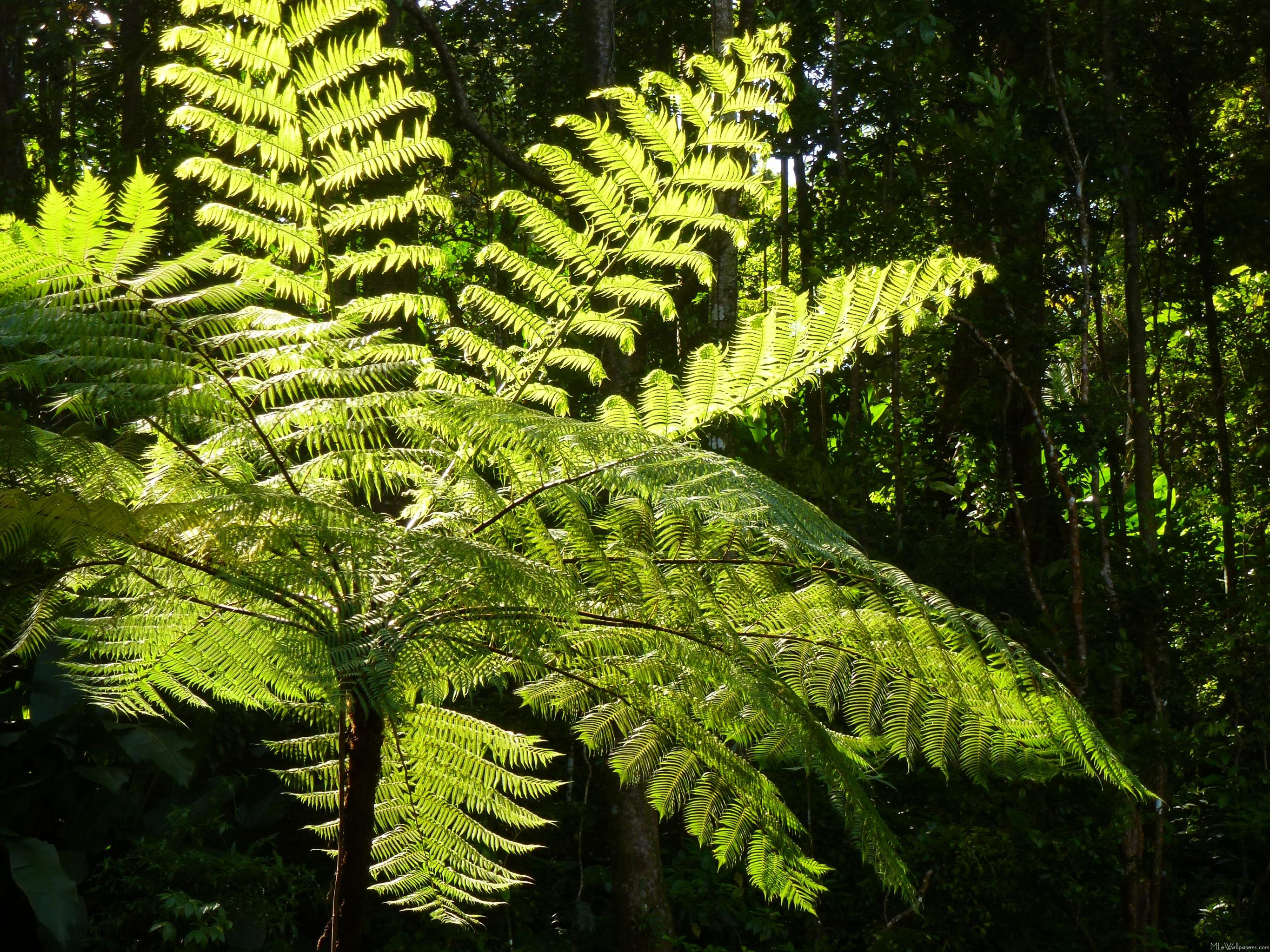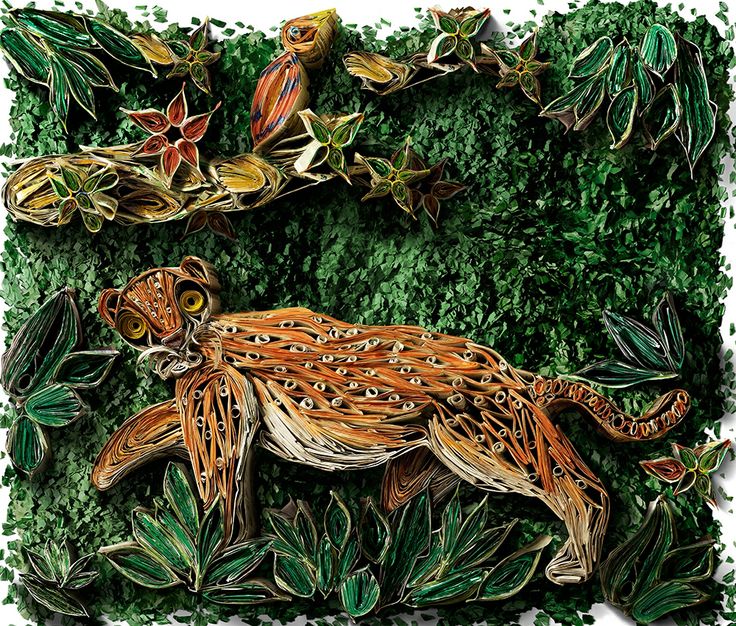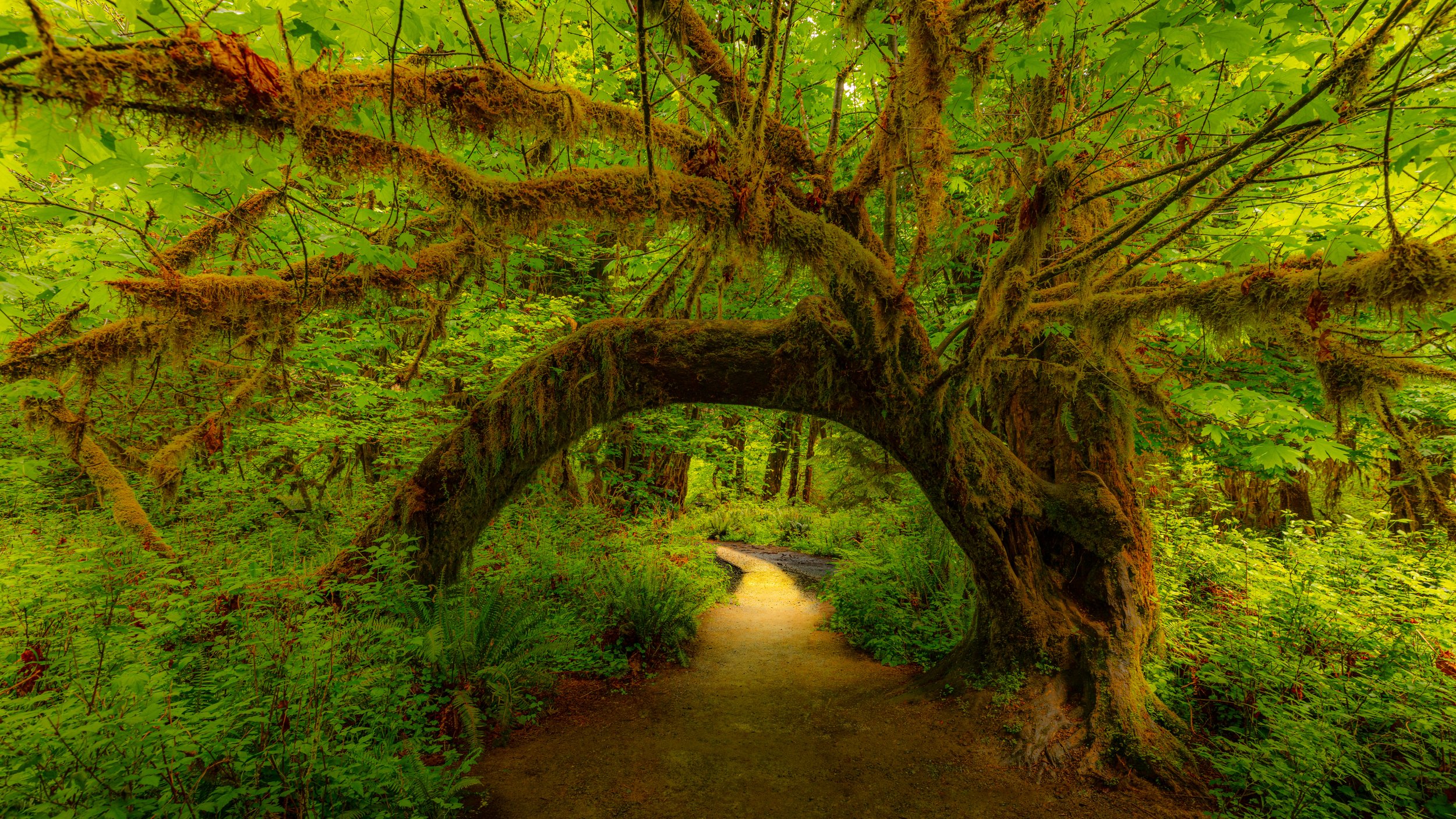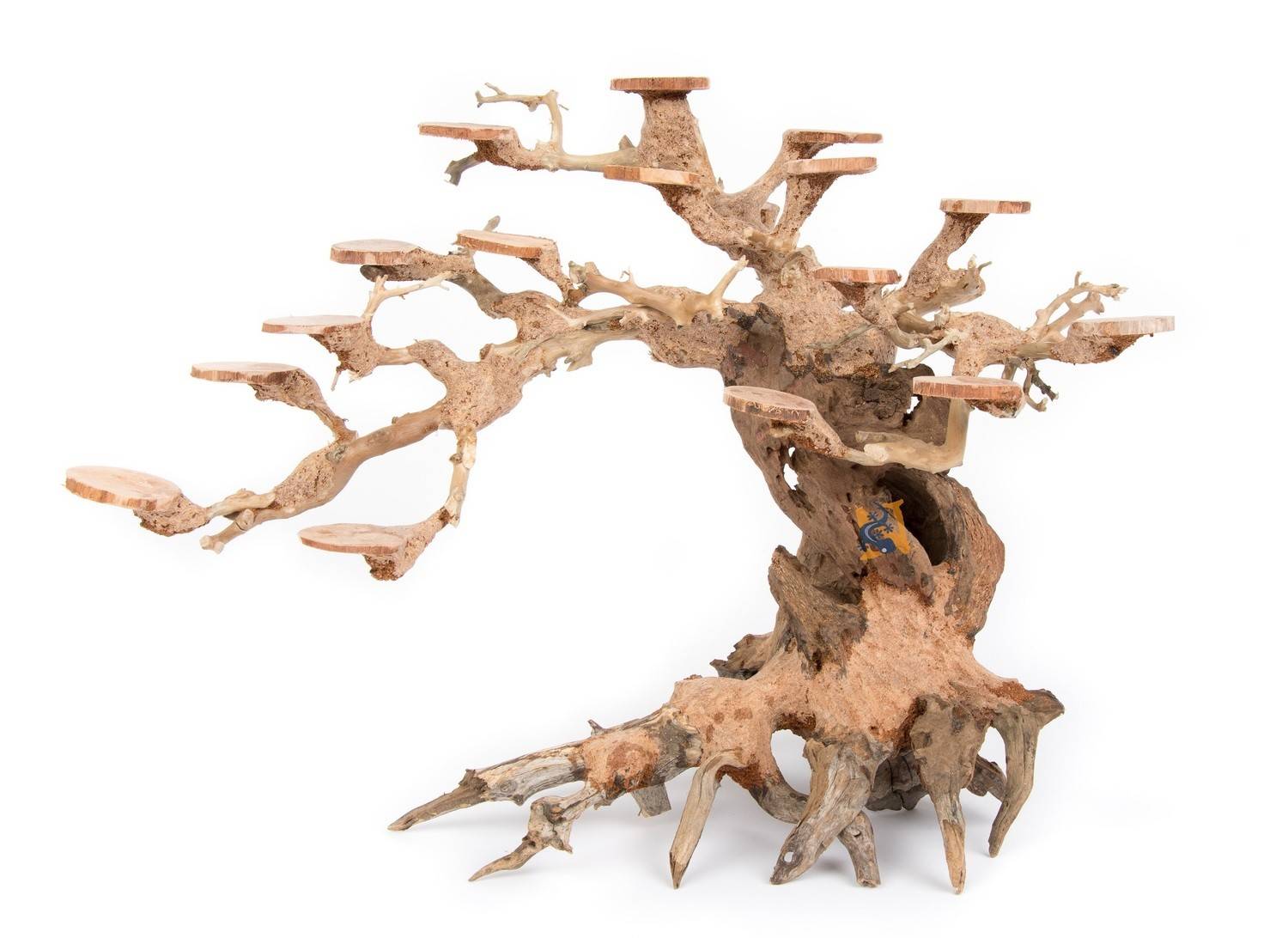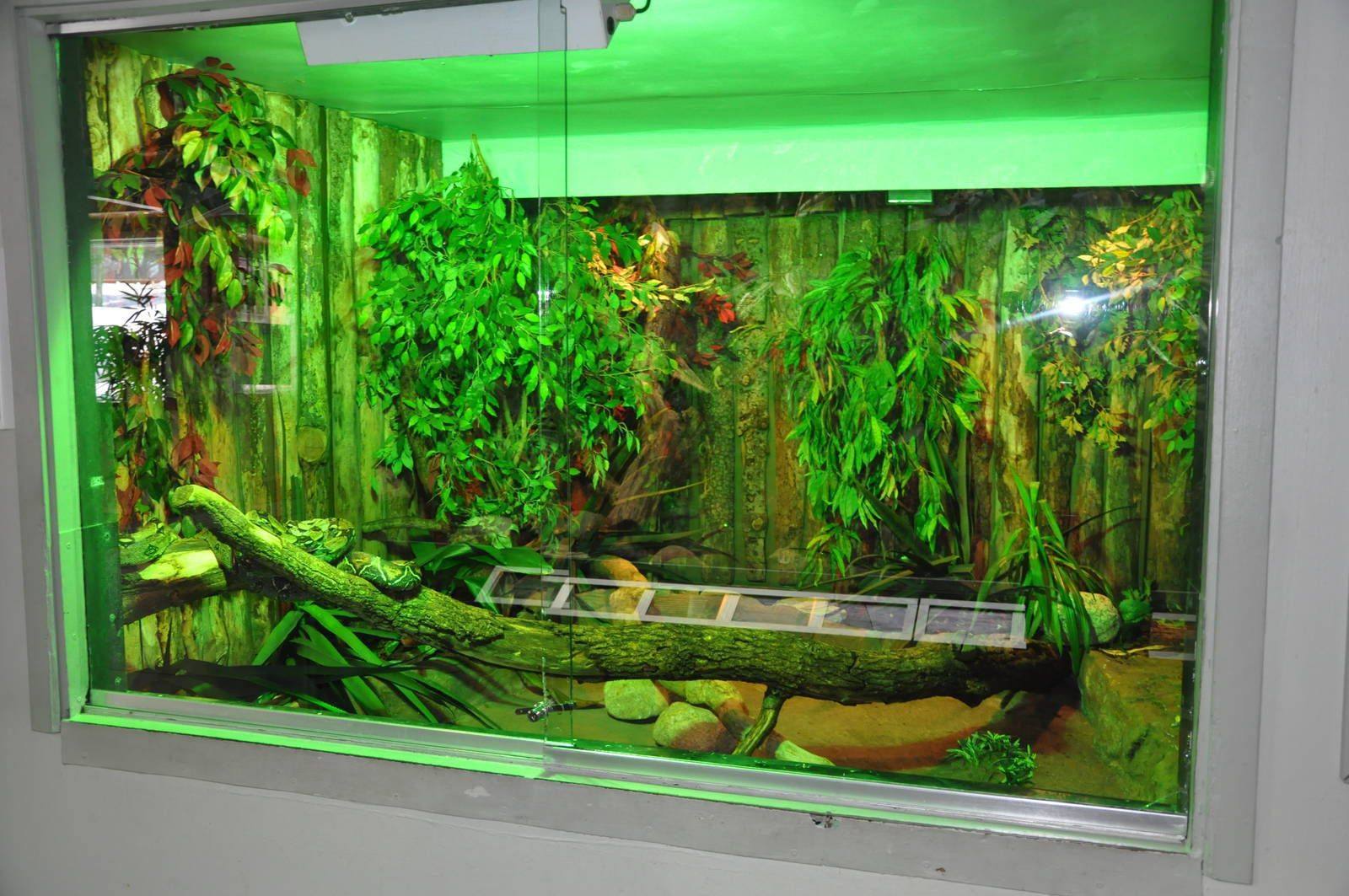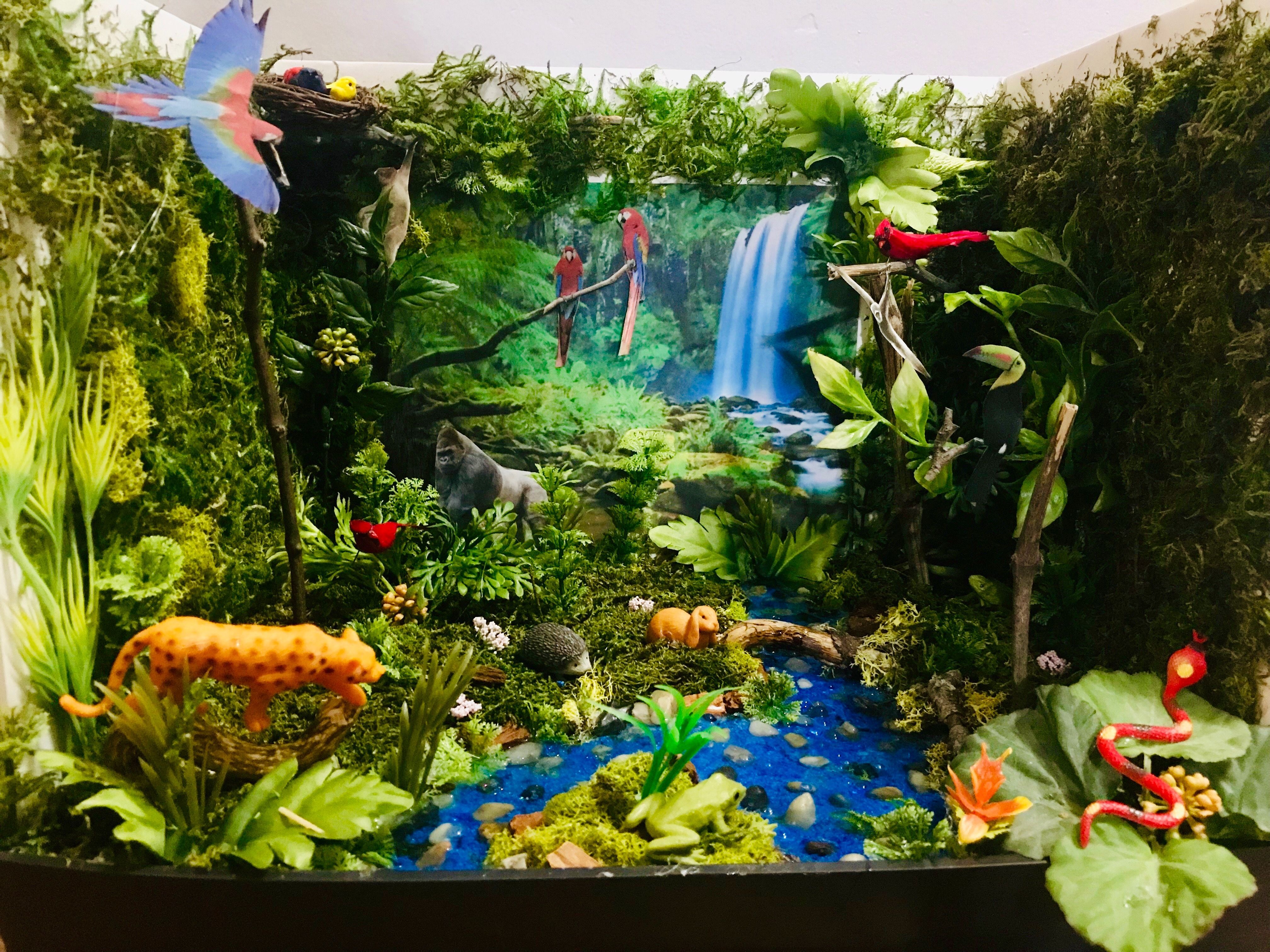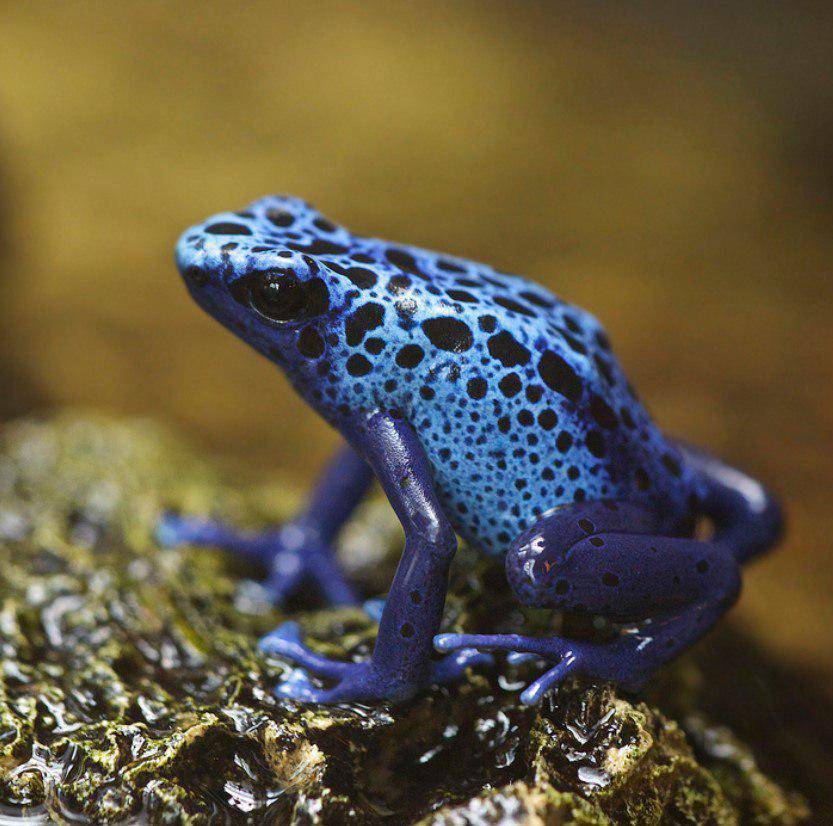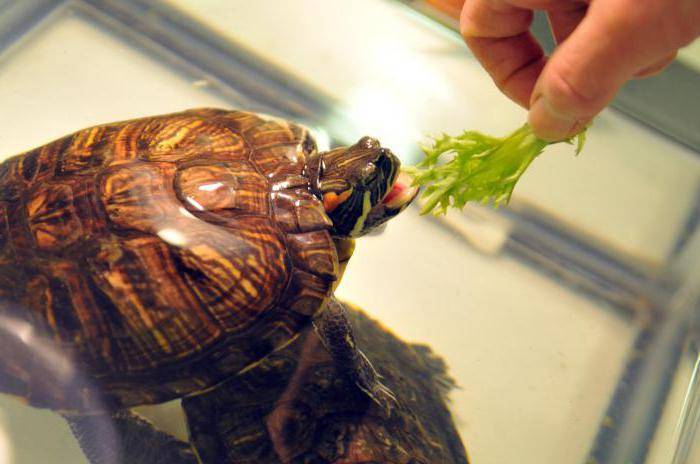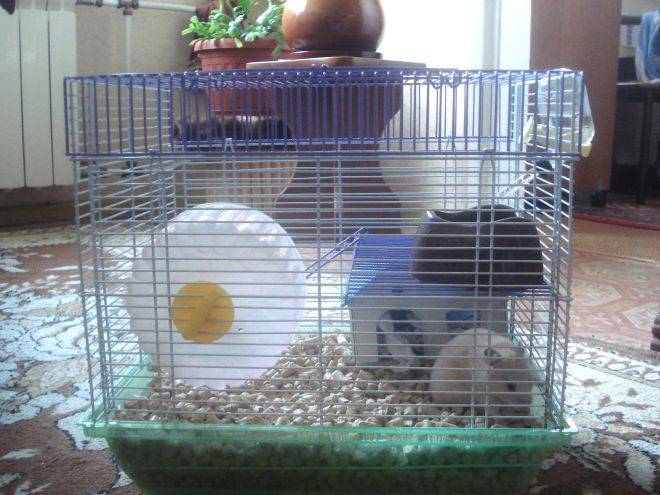Rainforest Terrarium Temperatures
I set up my Rainforest Terrarium in April 2018. From late spring to late summer 2018, we experienced an extended heatwave in the UK, with a summer different and more intense than any I remember passing before. This Rainforest Terrarium is housed inside my home, where it is sheltered from the weather, protected from the heat of the sun, and hidden away from almost every glimmer of natural daylight or sunlight. I must say that despite this protection, the temperatures during the summer of 2018 have been warmer inside my home than ever before.
I don’t have a heater or a cooling device inside my Rainforest Terrarium. I use the heating that keeps my home warm, to heat my terrariums. Accordingly, the temperatures inside my Rainforest Terrarium follow the temperature inside my home. From April 2018 to March 2019, the maximum temperature recorded inside my Rainforest Terrarium was 27.5C (81.5F), this reading was taken on the 8th July 2018. During this same time frame, the minimum temperature recorded inside my Rainforest terrarium was 17C (62.6F), this reading was taken on the 2nd January 2019.
 This chart shows the minimum and maximum temperature levels inside my Rainforest Terrarium, from April 2018 to March 2019.
This chart shows the minimum and maximum temperature levels inside my Rainforest Terrarium, from April 2018 to March 2019.
I designed my Rainforest Terrarium to provide automated care to my orchids. This terrarium features an automated misting unit, which waters the plants as often as I would like; I just have to top up the water source – a bucket of purified water – every few weeks and adjust the misting unit, to suit my requirements.
My Rainforest Terrarium is situated in a very dark, shaded room. Almost all of the orchids that reside inside my Rainforest Terrarium could not survive growing under the low light levels found inside my home, so I’ve installed a set of LED lights, to provide a good quality light source for the plants that reside inside my Rainforest Terrarium. I’ve set the lights up so that they turn on and off automatically at set times, using a time-switch.
Rainforest Terrarium Planting List:
As of March 2019, the following plants are currently growing inside this Rainforest Terrarium:
- Aerangis calantha
- Aerangis fastuosa
- Aerangis fuscata
- Aerangis hariotiana
- Aerangis luteoalba var rhodosticta
- Aerangis modesta
- Aerangis mystacidii
- Aerangis punctata
- Aerangis spiculata
- Amesiella minor
- Amesiella monticola
- Angraecum aloifolium
- Angraecum bancoense
- Angraecum compactum
- Angraecum didieri
- Angraecum elephantinum
- Angraecum equitans
- Angraecum pyriforme
- Paphiopedilum
- Paphiopedilum concolor
- Paphiopedilum esquirolei
- Paphiopedilum fairrieanum
- Paphiopedilum henryanum
- Paphiopedilum hirsutissimum
- Phalaenopsis appendiculata
- Phalaenopsis chibae
- Phalaenopsis cochlearis
- Phalaenopsis cornu-cervi ‘Green’
- Phalaenopsis cornu-cervi ‘Red’
- Phalaenopsis equestris
- Phalaenopsis equestris ‘Aparri’
- Phalaenopsis fasciata
- Phalaenopsis finleyi
- Phalaenopsis gibbosa
- Phalaenopsis honghenensis
- Phalaenopsis inscriptiosinensis
- Phalaenopsis lindenii
- Phalaenopsis lobbii
- Phalaenopsis lobbii f. flavilabia
- Phalaenopsis lowii
- Phalaenopsis lueddemanniana ‘Woodlawn’
- Phalaenopsis malipoensis
- Phalaenopsis pallens
- Phalaenopsis pantherina
- Phalaenopsis parishii alba
- Phalaenopsis pulcherrima
- Phalaenopsis pulchra
- Phalaenopsis stobartiana
- Phalaenopsis taenialis
- Phalaenopsis wilsonii
You can find out more about each of these orchids in my Rainforest Terrarium Planting List, which includes information of where I have purchased all of the orchids, cork, and moss for this terrarium.
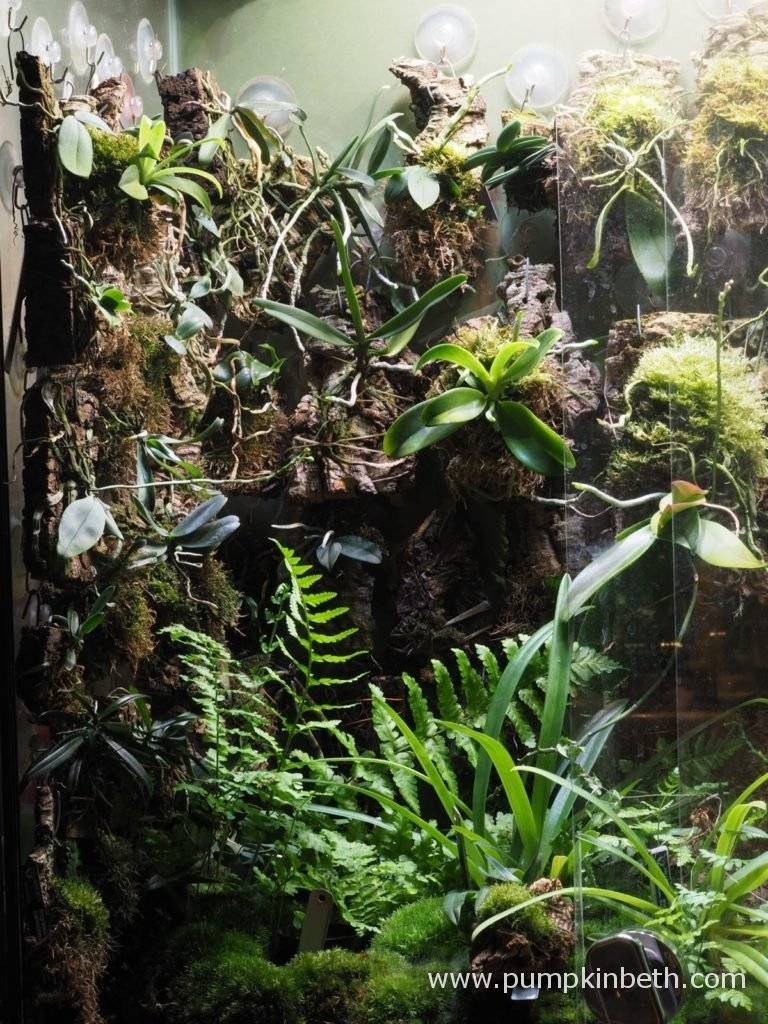 My Rainforest Terrarium, as pictured on the 18th February 2019.
My Rainforest Terrarium, as pictured on the 18th February 2019.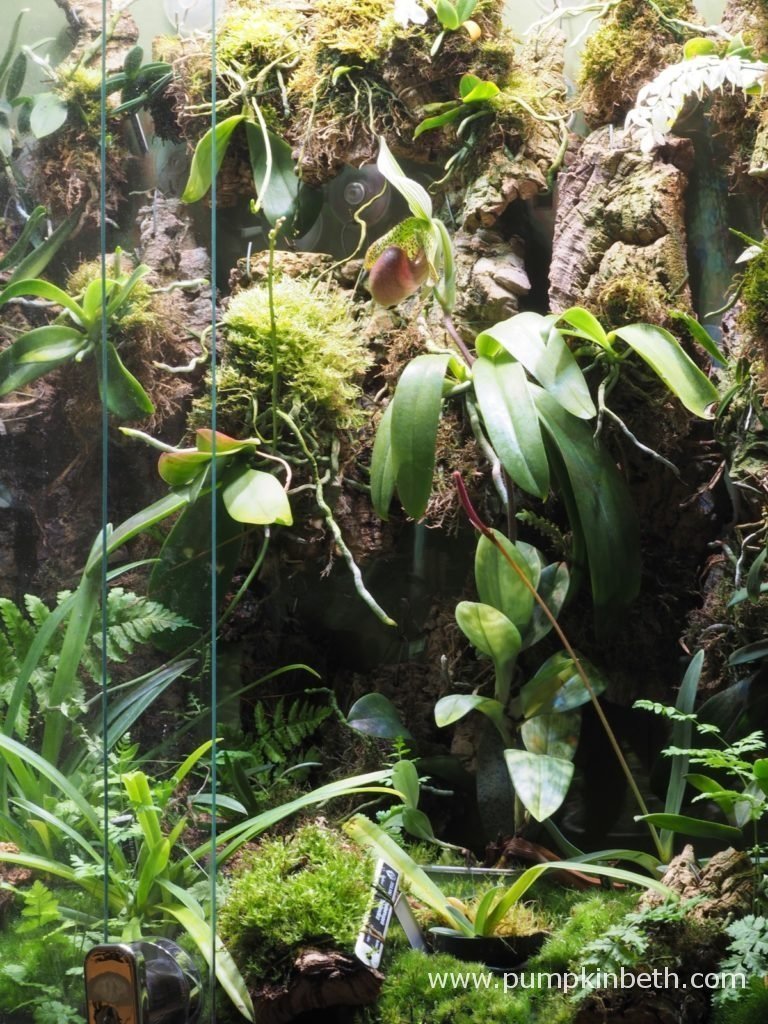 My Rainforest Terrarium, as pictured on the 18th February 2019. Inside this terrarium, Amesiella minor, Aerangis luteoalba var. rhodosticta, and this Paphiopedilum are in flower.
My Rainforest Terrarium, as pictured on the 18th February 2019. Inside this terrarium, Amesiella minor, Aerangis luteoalba var. rhodosticta, and this Paphiopedilum are in flower.
As there are so many orchids growing inside this Rainforest Terrarium, the updates on the plants and their growth contains lots of photographs are is rather long, so to make things more manageable I’ve listed them separately. You can see how the Aerangis, Amesiella, and Angraecum orchids grew and developed over their first eleven months inside this Rainforest Terrarium here in this update, via this link.
If you’re interested to discover how the Paphiopedilum and Phalaenopsis orchids are growing inside this Rainforest Terrarium, you can see these plants’ growth and development, from April 2018 to March 2019, via this link.
Other articles that may interest you……….
To see my Rainforest terrarium as it was set up and discover the thinking behind my design and find how everything is designed to work, please click here.
To see a planting list of orchids, ferns and other plants that are suited to growing in terrariums, please click here.
To see how my Orchidarium was set up, please click here.
To see the first part of my Madagascar Terrarium Trial, please click here.
To see the first part of my White Orchid Trial Terrarium, please click here.
To see the first part of my Miniature Orchid Trial, please click here.
New additions to my Rainforest Terrarium
Since I wrote about setting my Rainforest Terrarium up and the design of this terrarium, I have now added the following:
Two door handles – to make it easier to open and close the doors to this Rainforest Terrarium.
Terrarium door handles
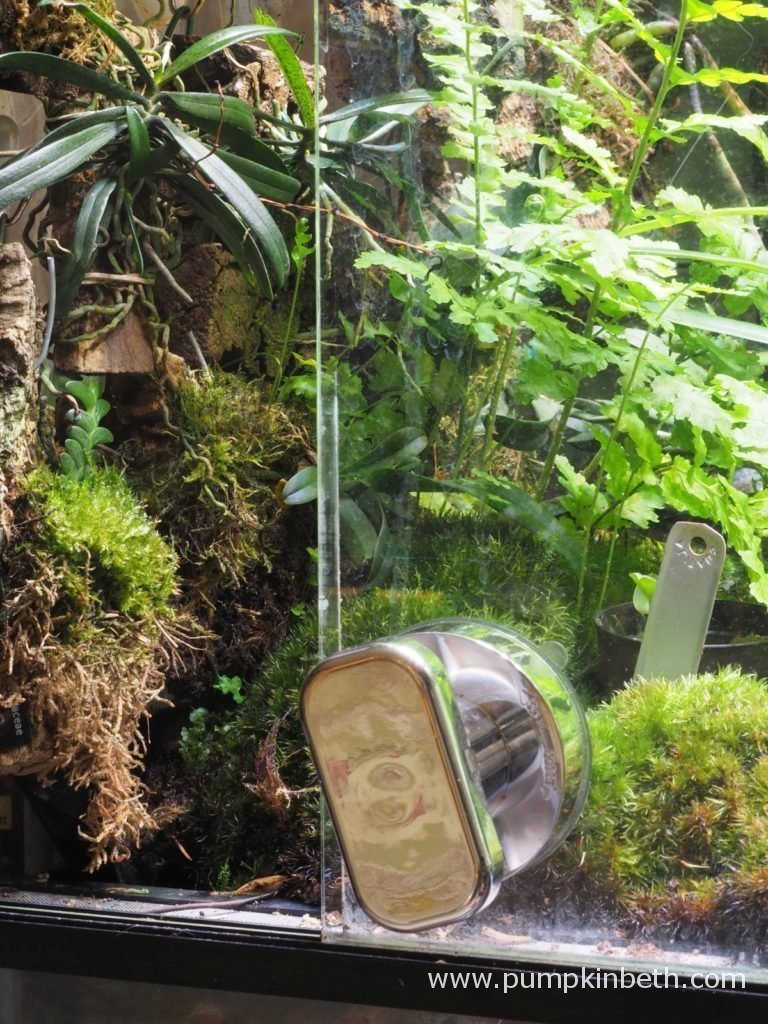 My Rainforest Terrarium, as pictured on the 18th February 2019.
My Rainforest Terrarium, as pictured on the 18th February 2019.
These handles stick to the glass with a combination of suction power and adhesive, they were easy to fit to the glass of my Rainforest Terrarium. Although it was possible to open and close the terrarium doors without the handle, this handle makes it easier to side the Rainforest Terrarium’s doors open and closed.
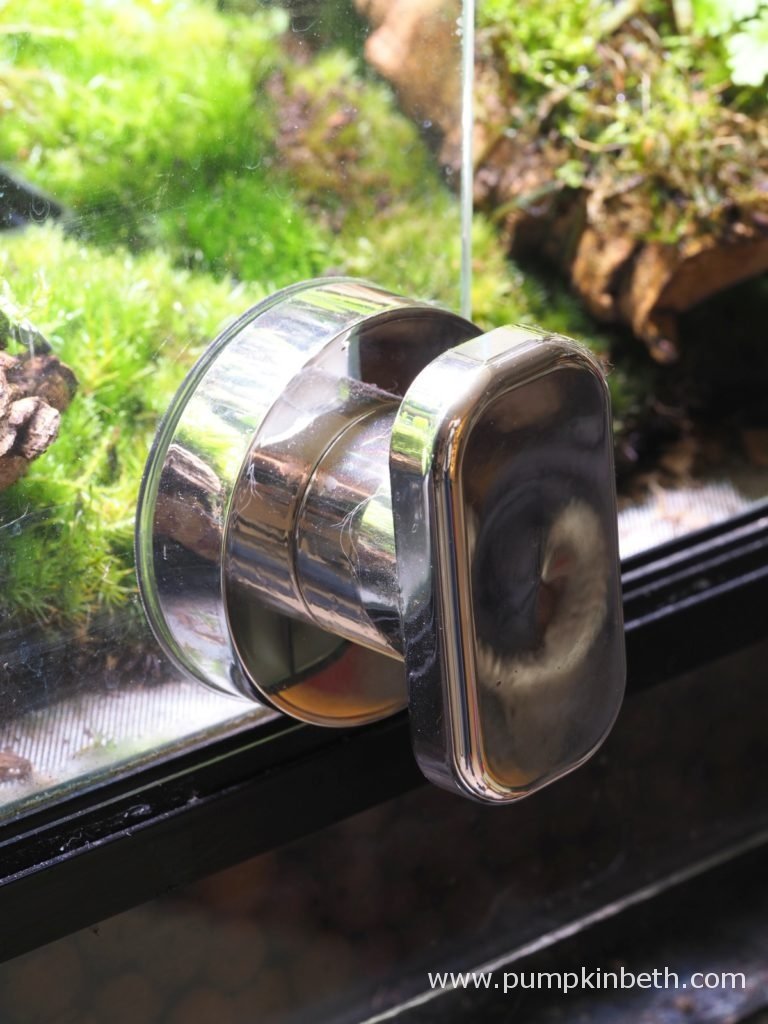 This door handle makes opening the glass doors to my Rainforest terrarium so much easier.
This door handle makes opening the glass doors to my Rainforest terrarium so much easier.
Rainforest Terrarium Misting Unit
When I set up this terrarium, I chose to install a MistKing misting system inside my Rainforest Terrarium. I have five misting nozzles: four single nozzles – one in each top corner, and one double nozzle – which is positioned in the middle of the front, inside edge, of my Rainforest Terrarium.
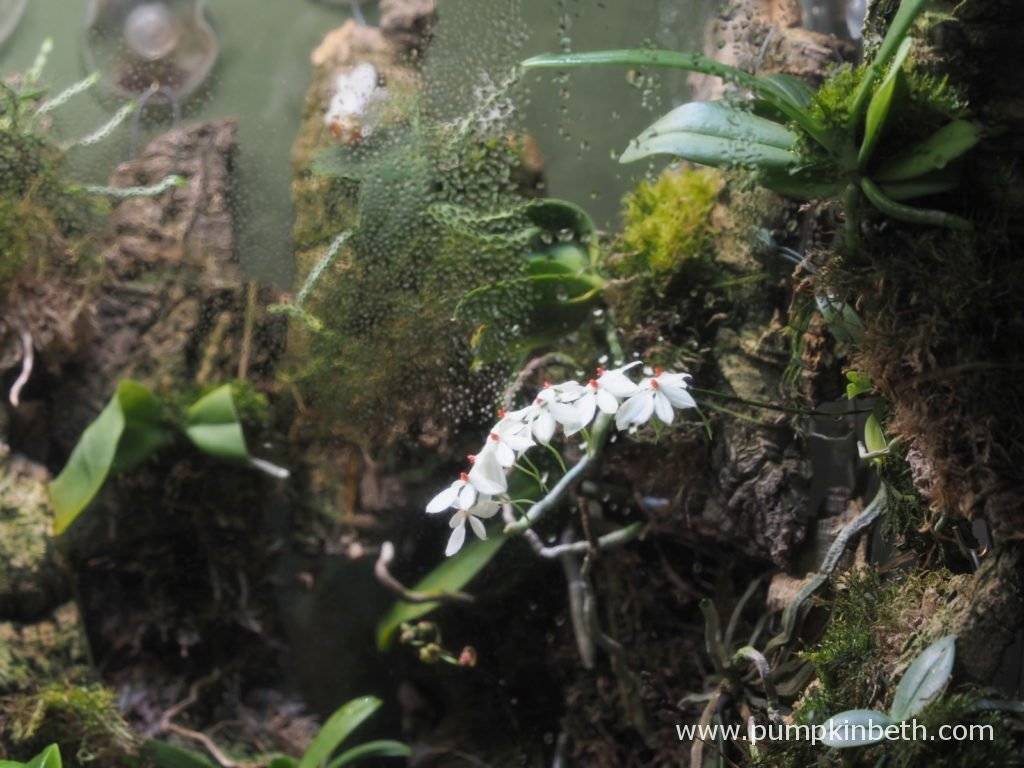 My Rainforest Terrarium after the MistKing misting unit has been in operation, as pictured on the 26th January 2019.
My Rainforest Terrarium after the MistKing misting unit has been in operation, as pictured on the 26th January 2019.
I haven’t had any problems with my MistKing misting system since I installed it eleven months ago. I use deionised water to fill the bucket that holds the water supply for my Rainforest Terrarium’s misting unit.
The plants inside my Rainforest Terrarium receive most of their water from this terrarium’s automated misting unit. The bucket that acts as a reservoir to supply the misting unit with water is re-filled every four weeks or so. This equates to the Rainforest Terrarium MistKing unit spraying approximately 14 litres of water over the plants, during a four week period.
The water used for my Rainforest Terrarium’s misting system needs to contain very few impurities, for various reasons. Firstly, the orchids need pure water (in the wild they survive on water vapour in the air, and rainwater which is very pure) so any salts or minerals might build up and cause problems for the plants. Secondly, the misting nozzles are very small (to produce the 50-micron droplets that make up the mist) so any impurities collecting around the nozzle tips could result in the system clogging up and becoming ineffective. Lastly, the mist inevitably collects on the glass of my Rainforest Terrarium, so the more pure the water, the smaller the build-up of reside that’s left behind when the water evaporates.
When I first set up this Rainforest terrarium, I used de-ionised water for the misting system, but I was conscious of not only the financial cost but also the environmental cost of having water delivered in plastic containers. So in December 2018, I installed a 5-stage reverse osmosis (RO) system into my kitchen. The water from this unit is now used for the Rainforest Terrarium’s misting system and to hand water/mist the orchids. I have tested the water for impurities, the readings for total dissolved solids (TDS) is (in parts per million):
- Water direct from my tap: 225ppm TDS
- De-ionised water: 2ppm TDS
- Tap water filtered through my reverse osmosis system: 85ppm
Whilst the de-ionised water is almost 100% pure, to use this water I need to purchase it, which means that heavy bottles of water are transported around this country; this comes with a high environmental impact. I’m happy enough with the purity of the water from my RO system, it should be fine for my plants and the misting system.
Misting System Settings
When I set my Rainforest Terrarium up in April 2018, I initially set the automated misting system to deliver a fine mist of deionised water over the plants inside this terrarium, for one minute and thirty seconds, at 8.30am, every morning.
On the 1st August 2018, I added an additional midday mist, that came into force every day, for thirty seconds, at 12.30pm – lunchtime.
As the seasons began to change, on the 8th September 2018, I reduced the duration for which the morning automatic misting inside this Rainforest terrarium. Consequently, since the 8th September 2018, the plants growing inside this Rainforest Terrarium have been misted automatically, at 8.30am, for one minute exactly.
As time moved on, I again changed the automatic misting settings. Since the 23rd December 2018, the misting unit inside my Rainforest Terrarium has operated daily, once at 8.30am for 45 seconds and then again, at 12.30pm (lunchtime), for 20 seconds. As usual, the plants were misted by hand as needed, as and when time allowed.
Коврик для рептилий с обогревом “Пустыня” 16Вт 26,5х28см Exo Terra,
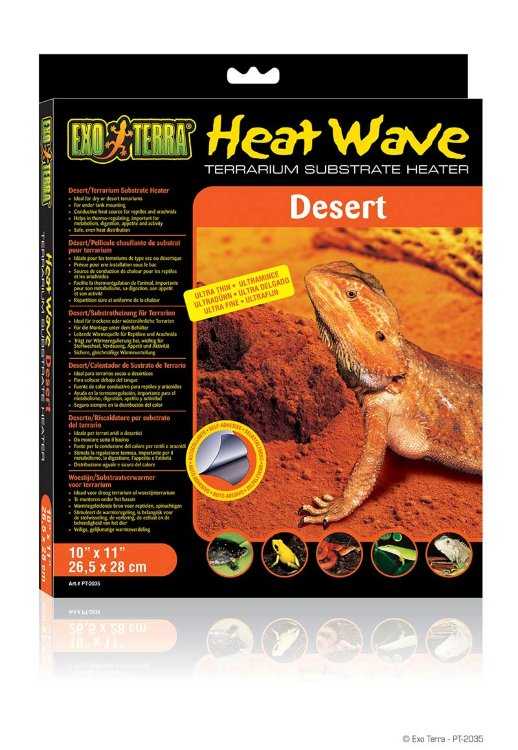
- Оптимальный обогрев для сухих террариумов пустынного типа
- Может монтироваться под полом террариума
- Источник тепла для рептилий и паукообразных
- Помогает обеспечить терморегуляцию, необходимую для метаболизма,
- пищеварения, аппетита и активности
- Тепло безопасно и равномерно распределяется по поверхности
- Нагревательный коврик Desert нагревает субстрат, имитируя нагретый солнцем песок в пустыне.
- В полуденные часы под жарким солнцем в таких районах субстрат может нагреваться до экстремально высоких температур.
- Грунт в таких местообитаниях сухой и не испаряет влагу, как в дождевых тропических лесах.
- Мощность нагревательного коврика Heat Wave Desert Exo Terra рассчитана на то, чтобы безопасно создавать такие условия в террариуме.
| Официальная гарантия | 6 месяцы |
| Длина | 26.5 см |
| Ширина | 28 см |
| Мощность | 16 Вт |
| Производитель | Exo Terra |
| Тип терморегулятора | Для рептилий |
| Артикул: | PT-2035 |
Rainforest Terrarium Maintenance
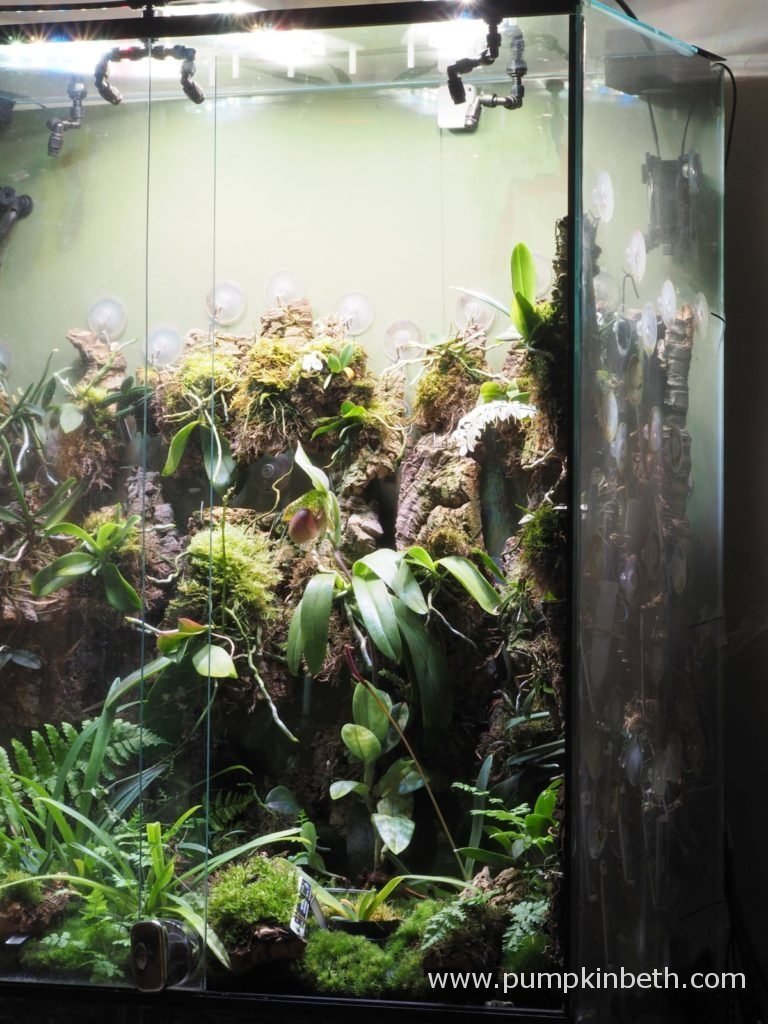 My Rainforest Terrarium, as pictured on the 18th February 2019. Inside this terrarium, Amesiella minor, Aerangis luteoalba var. rhodosticta, and this Paphiopedilum are in flower.
My Rainforest Terrarium, as pictured on the 18th February 2019. Inside this terrarium, Amesiella minor, Aerangis luteoalba var. rhodosticta, and this Paphiopedilum are in flower.
There is a reservoir at the base of my Rainforest Terrarium that collects any excess water, allowing the water to be drained at a later date. This reservoir has been drained about three times, since this terrarium was set up in April 2018. I would estimate that 9 litres of water has been removed by draining the base reservoir over a ten month period. I’d estimate that around 115 litres of water have been sprayed over the plants, inside the Rainforest Terrarium, over this same ten month period.
On a few occasions over the past eleven months, the plants inside this Rainforest Terrarium have been removed, then the suction cups that hold the plants in place on the glass, have been soaked and cleaned, the glass has been cleaned, the suction cups have been re-attached, and then the plants have been put back in place.
Rainforest Terrarium LED Lights
The Skylight Pro RP LED lights with three lighting units that I purchased for my Rainforest Terrarium are a prototype, they’re still in development. The set of lights that I have don’t have a built in timer, so I have set the lights up on a time-switch, to ensure that the Rainforest Terrarium lights turn on and off, as and when I want them to. I expect that the future version of these LED lights will have a built in timer, it’s certainly a feature I’d recommend. For 99% of the time, the time-switch I use has worked well.
During the evening of the 5th November 2018, I noticed that the lights inside my Rainforest Terrarium were off, when I had expected them to be on. I didn’t see my Rainforest Terrarium earlier that day, so I don’t know for certain if the lights were on earlier, but I imagine that the plants inside this terrarium were in darkness, without light, until the evening. I assume that this error was just a glitch with the automatic timer I use. The timer uses the internet to trigger the lights to turn on and to operate each morning. The Rainforest Terrarium’s lights operated successfully, straight away, when they were manually turned on that day, but it was not until about 6.30pm that evening that the lights were eventually turned on. There was a noticeable decline in the health and appearance of a number of the orchids growing inside this Rainforest Terrarium in the days that followed this mishap. At least one orchid aborted its flowering stem following its extra time confined to darkness.
I’ve had no problems whatsoever with my LED lights from Skylight. In fact, I am absolutely thrilled with these lights! If you’re looking for a set of lights for your terrarium, vivarium, or orchidarium, I would recommend Skylight’s Pro RP LED lights. These lights from Skylight use passive cooling, so there are no fans needed to cool these lights, meaning that they operate silently, which is a great bonus! If I was setting this Rainforest Terrarium up again, I would again choose to use these lights from Skylight.
In contrast, I am so fed up of the sound of my Jungle Hobbies’ lights, which I installed inside my Orchidarium. The Jungle Hobbies’ lights house a fan that operates every few minutes to keep the lights cool. It really is a loud fan, I find the noise to be an intrusive, annoying sound. I would not purchase these Jungle Hobbies’ lights again; I am currently considering selling my Jungle Hobbies’ lights.


